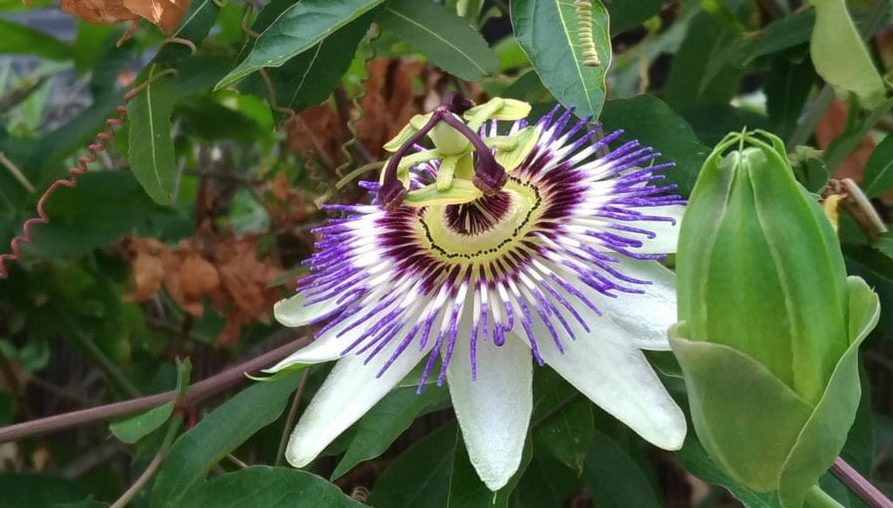When to sow the passiflora?
Passiflora can be planted either in spring or in autumn. Spring remains however the ideal period to sow the passiflores. You will obtain very beautiful climbing plants that can decorate your veranda or your garden in various places.
Which varieties to choose?
Passiflora contain hundreds of botanical and hybrid species, but few are commonly cultivated in France.
The blue passionflower (Passiflora caerulea) : it blooms from June to October and reaches heights of 6 to 8 meters. It gives orange ovoid fruits and it resists cold down to -10 ° C. it is the best known and the most rustic since it supports cold temperatures. We love its lightly scented flowers of large size, between 10 and 12 cm, with bluish white petals, adorned with a crown of purple filaments. Small orange and ovoid fruits that appear in the fall. The fruits are edible, but they do not have a great taste interest. This species gave some hardy hybrids such as Constance Elliott.
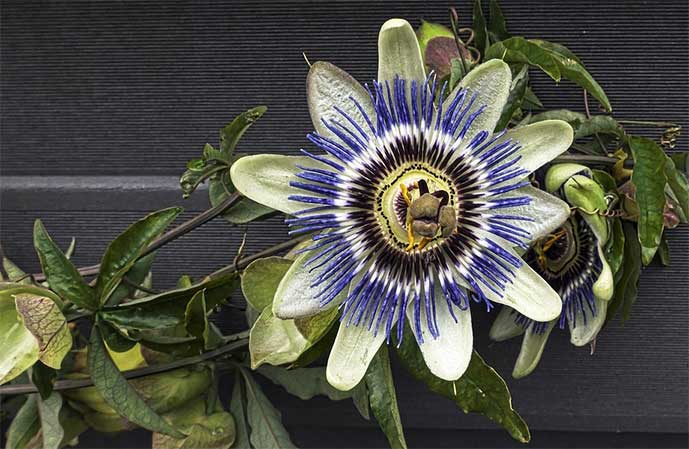 The blue passionflower © Anaterate
The blue passionflower © AnateratePassion fruit or grenadilla or Passiflora edulis : it is a variety that can only be grown under cover as in veranda, because it can not stand the cold. It must be perfectly sheltered. It is grown for its edible fruit in tropical countries where it is used in jam, juice and pastry.
Maypop or passion fruit, Passiflora incarnata : this variety is native to America. It is sometimes considered as a weed, but also as a medicinal plant.
Constance Elliott it gives white flowers with a purple brown filament of 7 cm. At maturity, it reaches 5 to 7 meters and gives yellow ovoid fruits. It resists cold well down to -10 ° C.
The Passiflora lutea : it presents beautiful yellow flowers and gives beautiful red-brown fruits. It rises between 5 and 7 meters and is cold-resistant to -10 ° C.
The Passionflower (Passiflora incarnata) : this variety gives blue flowers and yellow-green fruits. It is fairly resistant to very low temperatures, up to / 3 ° C only. It can have a height of 6 meters.
Passion fruit (Pasiflora edulis) : its flowers are green-white with a crimson wreath. It flowers from May to June. Its fruits are globose and purple. It supports cold temperatures down to -5 ° C. It usually reaches 5 meters in height.
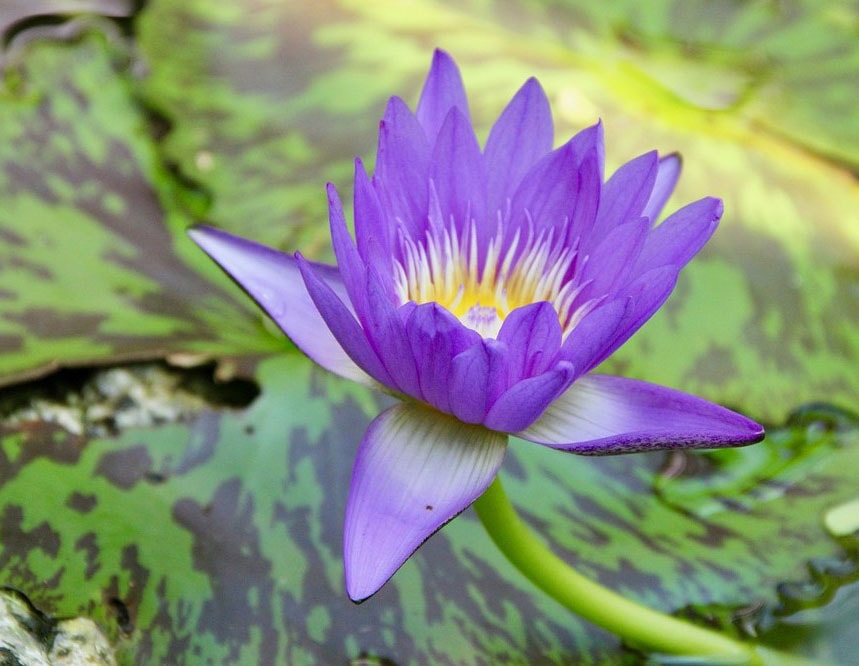 © Mary Bettiniblank
© Mary BettiniblankThe Passiflora violacea it has purplish-blue flowers and yellow-green fruits. It reaches between 5 and 6 mothers and is hardy to -3 ° C.
The Passiflora alata : its red flowers measure 10 cm and they appear from April to September. Its fruits are oval and yellow in shape. It is hardy and can withstand temperatures down to -3 ° C and has a height of 4 to 6 meters.
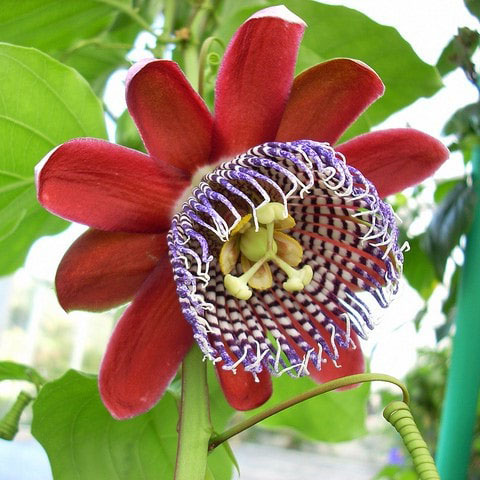 © Edwige – Flickr
© Edwige – FlickrThe Passiflora vitifolia: it blooms between June and October, giving birth to fiery red flowers. Its leaves are trilobed. It supports temperatures up to -4 ° C. It rises to 5 to 6 meters.
What to do before sowing the passiflora?
Before sowing the passiflora, it is necessary to prepare the ground in which you will sow them. We must dig and refine the soil and especially remove all weeds, roots and pebbles. Just add fine sand if your soil is too heavy and too wet to drain it.
How to sow them?
- The day before sowing, you will soak the seeds in a glass of warm water, so they will germinate more easily later.
- Fill your peat cups with a mixture of sand and potting soil to make the soil light and draining.
- Place them in the box and in a mini-greenhouse or under cover.
- You put three or four seeds in each bucket and you push them a few millimeters only.
- You then water with a vaporizer, then you have to close the lid.
- They must be kept in a bright, heated room, but not exposed to direct sunlight.
- After two or three weeks, they start to rise.
- Then keep the substrate slightly cool, ventilate and remove condensation on the lid.
- You then repot them in larger containers and keep them until the following spring, when you can plant them permanently.
The passiflora are equipped with tendrils. They must be planted near a fence, a trellis or any other support fine enough to let the tendrils wrap like a liana.
Multiply the passiflora:
Propagation can be carried out by seeding, by cuttings of stems or by layering.
The multiplication by sowing :
- You harvest the seeds from the ripe fruits you open to harvest at the bottom of a fine strainer.
- Remove the pulp by washing the seeds under clear water.
- Sow the seeds quickly in a terrine of seedling with fine soil and dedicated for this purpose.
- Then replicate in individual pots once a month has elapsed.
The multiplication by marcottage :
In summer, select a twig of the current year and bend it to the ground by burying a node from the leaves. It must be maintained with a stone for one month. Then you can cut the portion of the branch that has taken root.
The multiplication by cuttings :
This is the easiest way to multiply passionflower:
- Cut 20 cm high sections between two internodes to have at least three leaves.
- Remove the leaves from the base and cut the others.
- Dip the stem in hormone powder.
- Plant the cutting in a mixture consisting of half potting soil and half sand, this mixture should be well drained and light.
- Then cover with a mini greenhouse or a film and let them root.
- You will then transplant them into individual pots.
Where to plant the passiflora?
The most hardy passiflora can be planted directly in the ground, provided that the land is rich and well drained. They appreciate the sun. In winter, to support the cold perfectly, the soil must be dry and well drained.
Passiflora less or not hardy are best planted in pots that you put in winter freeze.
Use a good potting soil and a pot that is taller than it is wide.
It is possible to weaken the plant to grow it by growing it in a smaller pot. But it is better to feed it well and use a special fertilizer flowering plants.
How to maintain them?
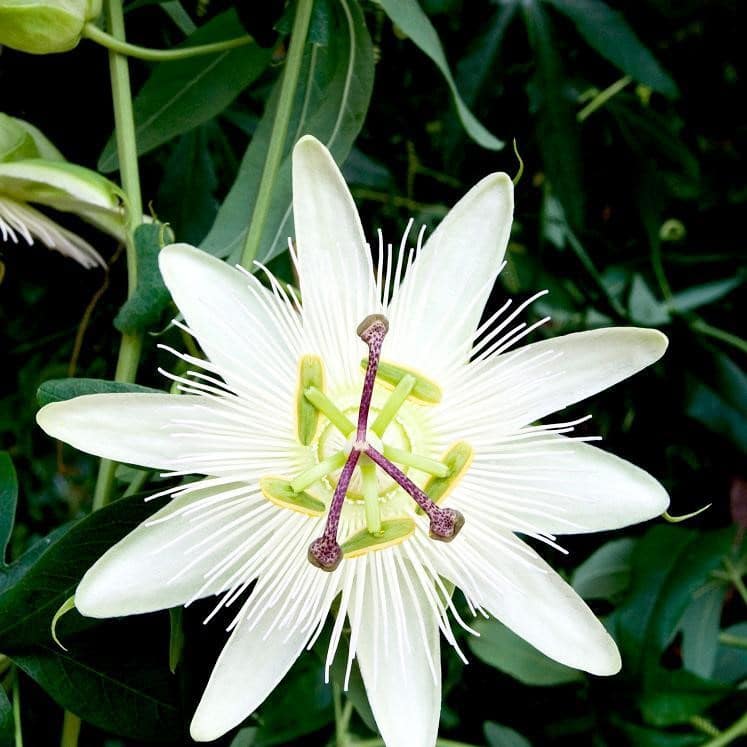
Cover the foot with mulch as soon as you plant your passiflores. In winter, protect the feet of varieties that are hardy with mulch at least 10 cm thick or with a layer of leaves.
Species that fear the cold will benefit from being grown under well-lit shelter and frost-free.
In the spring and every year, the passiflora will be enriched with a bucket of well ripe and decomposed compost or a balanced fertilizer.
If you grow them in pots, they should be repotted every two or three years in a slightly larger pot and draining soil, during the spring.
Prune the passiflora :
Every year, dry dead stems and badly placed branches should be removed. If the stems are blackened by frost, close the plant close to the foot. You will then see new shoots appear from the rhizome.
After a few years, the most hardy species become bushy and dense and cover large areas. You can lighten them by removing some of the creepers.
If you grow them indoors or on a veranda, you need to shorten the creepers too long and lighten the plant by removing one rod out of three, in this way you ventilate it properly.
During the season, guide the branches along the trellis or the fence, you must pay attention to its strength.
How to water the passiflora?
It is necessary to water plants in open ground in summer and especially during hot weather and in case of drought during the first three years.
Harvesting passionlores: when and how?
Passiflora can be cut at the beginning of flowering. They can then make beautiful bouquets or be dried and used in preparation for healing. It is necessary to know how to make preparations and to be well informed before launching. In addition, it does not replace a treatment and you should seek the advice of your doctor.
The diseases of the passiflora and what to do?
The passiflora fear the attacks of mealybugs and white flies. They should then be treated with an approved biological insecticide or black soap.
Aphids invade the passiflora and may spread viruses to plants. To fight against them, it is necessary to spray nettle manure.
Plant other flowers:


